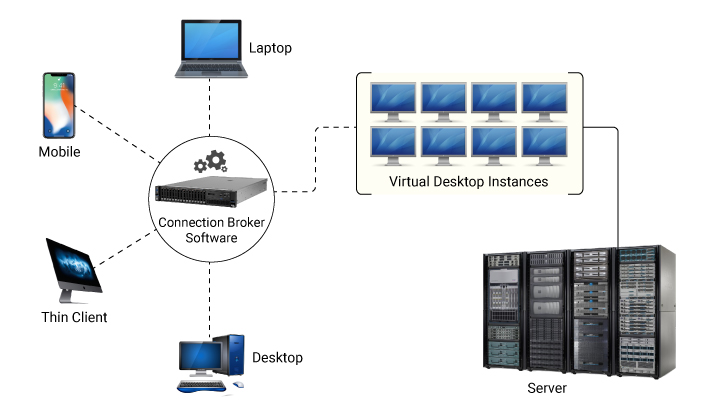VDI Solution
Virtual Desktop Infrastructure (VDI) involves running end-user desktops on Virtual Machines (VMs) that may be hosted in the cloud or on dedicated bare metal servers.
In such an environment, each user is allocated a dedicated virtual machine that runs a separate operating system. VDI provides an isolated environment for each employee and offers the same user experience as a traditional physical desktop.
Users can log into their VMs on any device and anywhere through a secure network. A VDI hosted environment provides an end-user experience through a virtualized backend that hosts VMs. One of the virtualization tools is VMware vCloud, which emphasizes scalability and rapid deployment.
While not perfect for every business use case, the right VDI deployments offer optimal performance at a fraction of the price of a fleet of equally powerful physical desktops.
